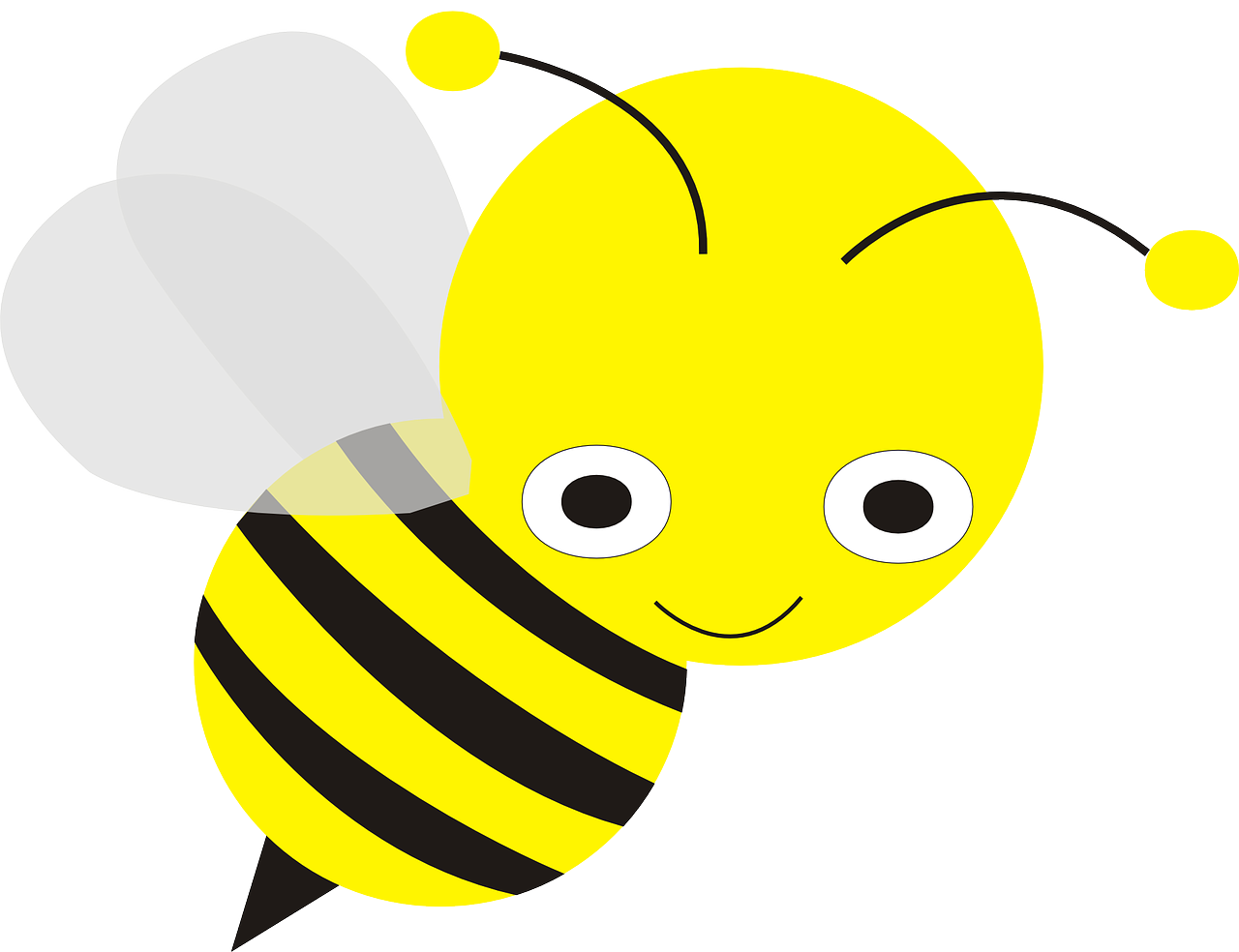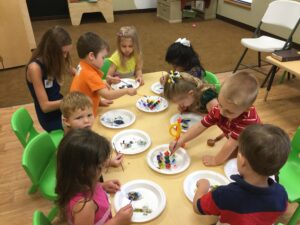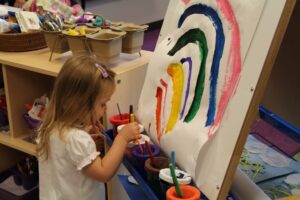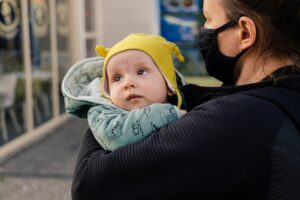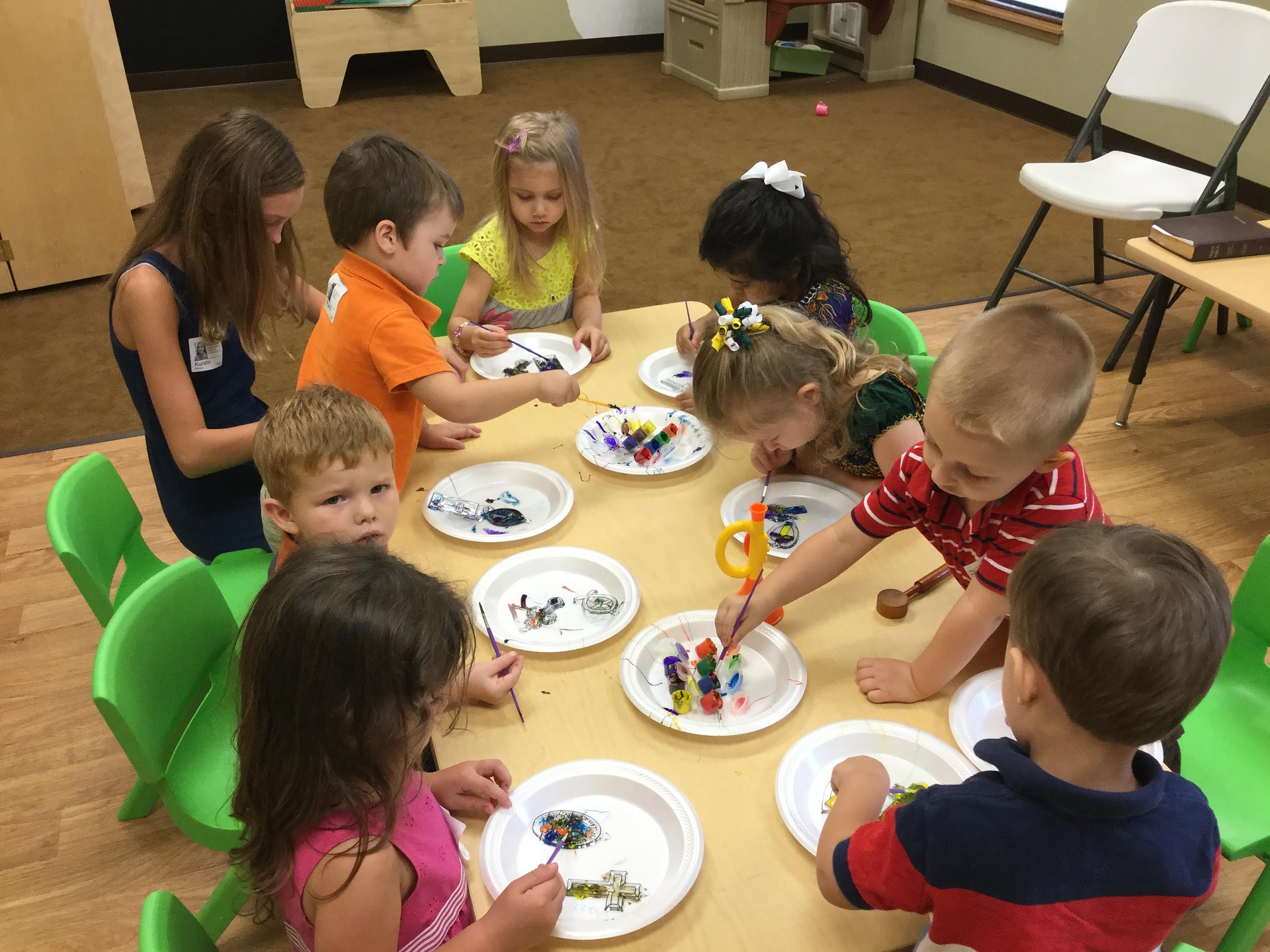
Child Development Guide for Preschoolers
Children develop at their own pace, so it’s impossible to tell exactly when yours will learn a given skill. The developmental milestones below will give you a general idea of the changes you can expect as your child gets older, but don’t be alarmed if your child does not exactly follow the steps as outlined.
Child development by end of 36 months
Social
- Imitates adults and playmates
- Spontaneously shows affection for familiar playmates
- Can take turns in games
- Understands concept of “mine” and “his/hers”
Emotional
- Shows affection openly
- Shows a wide range of emotions
- By 3, separates easily from parents
- Objects to major changes in routine
Cognitive
- Makes mechanical toys work
- Matches an object in her hand or room to a picture in a book
- Plays make-believe with dolls, animals, and people
- Sorts objects by shape and color
- Completes puzzles with three or four pieces
- Understands concept of “two”
Language
- Follows a two- or three-part command
- Recognizes and identifies almost all common objects and pictures
- Understands most sentences
- Understands placement in space (“on,” “in,” “under”)
- Uses 4- to 5-word sentences
- Can say name, age, and sex
- Uses pronouns (I, you, me, we, they) and some plurals (cars, dogs, cats)
- Strangers can understand most of her words
Movement
- Climbs well
- Walks up and down stairs, alternating feet (one foot per stair step)
- Kicks ball
- Runs easily
- Pedals tricycle
- Bends over easily without falling
Hand and Finger Skills
- Makes up-and-down, side-to-side, and circular lines with pencil or crayon
- Turns book pages one at a time
- Builds a tower of more than six blocks
- Holds a pencil in writing position
- Screws and unscrews jar lids, nuts, and bolts
- Turns rotating handles
Developmental Health Watch
Alert your child’s doctor or nurse if your child displays any
of the following signs of possible developmental delay for
this age range.
Frequent falling and difficulty with stairs
Persistent drooling or very unclear speech
Cannot build a tower of more than four blocks
Difficulty manipulating small objects
Cannot copy a circle by age 3
Cannot communicate in short phrases
No involvement in “pretend” play
Does not understand simple instructions
Little interest in other children
Extreme difficulty separating from mother or primary caregiver
Poor eye contact
Limited interest in toys
By the end of 4 years (48 months)
Social
- Interested in new experiences
- Cooperates with other children
- Plays “Mom” or “Dad”
- Increasingly inventive in fantasy play
- Dresses and undresses
- Negotiates solutions to conflicts
- More independent
Emotional
- Imagines that many unfamiliar images may be “monsters”
- Views self as a whole person involving body, mind, and feelings
- Often cannot tell the difference between fantasy and reality
Cognitive
- Correctly names some colors
- Understands the concept of counting and may know a few numbers
- Tries to solve problems from a single point of view
- Begins to have a clearer sense of time
- Follows three-part commands
- Recalls parts of a story
- Understands the concepts of “same” and “different”
- Engages in fantasy play
Language
- Has mastered some basic rules of grammar
- Speaks in sentences of five to six words
- Speaks clearly enough for strangers to understand
- Tells stories
Movement
- Hops and stands on one foot up to five seconds
- Goes upstairs and downstairs without support
- Kicks ball forward
- Throws ball overhand
- Catches bounced ball most of the time
- Moves forward and backward with agility
Hand and Finger Skills
- Copies square shapes
- Draws a person with two to four body parts
- Uses scissors
- Draws circles and squares
- Begins to copy some capital letters
Developmental Health Watch
Alert your child’s doctor or nurse if your child displays any
of the following signs of possible developmental delay for
this age range.
- Cannot throw a ball overhand
- Cannot jump in place
- Cannot ride a tricycle
- Cannot grasp a crayon between thumb and fingers
- Has difficulty scribbling
- Cannot stack four blocks
- Still clings or cries whenever parents leave
- Shows no interest in interactive games
- Ignores other children
- Doesn’t respond to people outside the family
- Doesn’t engage in fantasy play
- Resists dressing, sleeping, using the toilet
- Lashes out without any self-control when angry or upset
- Cannot copy a circle
- Doesn’t use sentences of more than three words
- Doesn’t use “me” and “you” correctly
